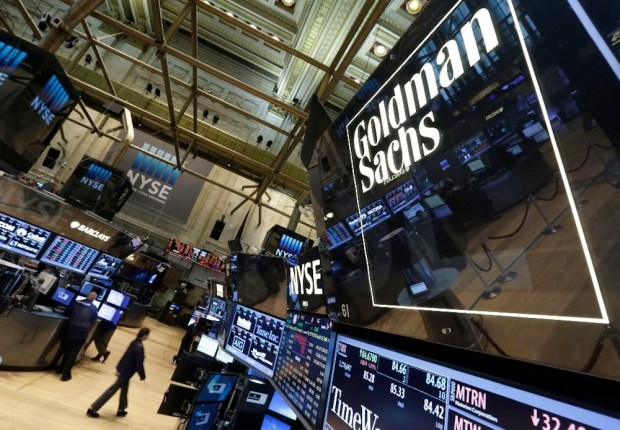Goldman Says It Has 1.5M Marcus Customers

Goldman Sach reported a surge in profit during the second quarter that overall exceeded Wall Street estimates, while also announcing that CEO Lloyd Blankfein will — after 12 years — hand over the position to the company’s President and COO David Solomon. When Blankfein retires at the end of this year, he will then be given a “senior chairman” title.
The investment bank, which has made major advances to bolster its digital investments, continued moves to bolster its increasingly important digital expansion, including its Marcus by Goldman Sachs online consumer savings and lending platform. However, company shares were down in early trading as the Wall Street giant showed sluggish results in its key trading business.
Goldman Sachs said net income jumped $2.57 billion, compared with $1.83 billion in the year-ago quarter. On a per-share basis, fully diluted earnings surged 51 percent to $5.98 a share during the second quarter from $3.95 in the year-ago quarter. Earnings exceeded Wall Street estimates of $4.46 a share, based on a Thomson Reuters survey of analysts. The firm reported a 19 percent net-revenue increase to $9.4 billion, compared with just under $7.9 billion in the year-ago quarter. The firm said the quarterly revenue totals were the second-highest figure in the past nine years. Shares closed down 0.18 percent at $231.02 a share.
The firm reported operating expenses rose 14 percent to $6.13 billion in the quarter. Among various non-compensation expenses, Goldman Sachs noted that expenses related to consolidated expenses and its digital lending and deposit platform were higher, reflecting increased activity levels. In addition, technology expenses were higher, related mainly to computing services.
Goldman Sachs has ramped up its investments in digital in recent months, amid heightened competition in online banking by rival investment firms. Apple is teaming up with Goldman Sachs to launch a new Apple-Pay-branded credit card by 2019, replacing Barclays, which has been Apple’s main partner on such initiatives.
Goldman is also ramping up its fraud and cyber protection efforts by signing up with U.K.-based Immersive Labs, which is using cybersecurity war games to help participants protect against threats like Wannacry.
In April, Goldman Sachs completed the acquisition of the Clarity Money personal finance app, and said it would transfer about 1 million customers over to its Marcus platform.
R. Martin Chavez, CFO at Goldman Sachs, told analysts during the company’s quarterly conference call that it is excited about its Marcus by Goldman Sachs business, which is an increasingly important growth area for the firm. He said the company has over 1.5 million customers in its Marcus by Goldman Sachs business, including deposits of $23 billion and a loan book of $3.1 billion. It has also originated more than $4 billion in loans since the business launched, updating the previous $3 billion benchmark in April. The firm is on track to expand into the U.K. deposit market business later this year.
Chavez noted that the company is very careful in the quality of customers who qualify for loans, as the firm not only uses FICO scores but proprietary scoring models to qualify potential borrowers. He said the company is continuing to look at other opportunities in this area, including wealth management and credit cards. When asked by one analyst about how Marcus measures up against rival initiatives or expansion plans from firms like JPMorgan, Citi and PNC, he emphasized that Goldman is up for the challenge.
“We know this is a competitive and commoditized market, and we know we have to differentiate ourselves and earn our way into it,” Chavez told analysts on a conference call.
The CFO said that Goldman Sachs, while thinking about its approach to the digital banking expansion, wanted to find out what is the consumer’s pain point and how could it resolve that in a differentiated way.
Goldman Sachs officials wanted to know if the digital side of the business would be able to make a material contribution to the company without requiring it to reach a huge market share to make that happen. They said one advantage the company had was it wasn’t burdened with a legacy of huge mainframe computer systems or brick-and-mortars out of which to transition.
